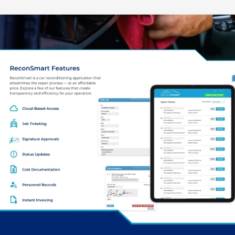Social Commerce, Today and Tomorrow
08.10.22
Let’s face it — we are all chronically online. Popular social platforms proliferate everyday life. Whether your platform of choice is Facebook or TikTok, many people find themselves scrolling through social media as soon as their eyes open in the morning. This phenomenon poses the question: How can marketers utilize social media to influence consumer behavior? Many brands are exploring new frontiers in marketing by using social media to increase brand awareness and promote products through social commerce.
The Landscape of Social Commerce
Social commerce is the convergence of e-commerce and social media. It offers the opportunity to transform social platforms into vehicles to sell products and services. In a mobile-centric world, e-commerce options are increasingly important for brands. Nearly 76% of consumers report using their mobile devices to purchase products due to perceived convenience and consumer safety options. Commerce through social media is the perfect way to reach consumers where they stand — however, it is a continually evolving concept across platforms.
Facebook is widely considered the leader in social commerce. The brand launched the Shops feature in May 2020 to sell items directly on Facebook and Instagram. This feature allows brands to curate their available collections on a Facebook or Instagram storefront that mirrors your website. The B2C store lives on your brand profile and provides consumers with curated product collections, a cart and an option to purchase now. As a mobile-first shopping experience, Shops allow businesses to manage everything in their business processes on Facebook, including tracking analytics, customer communications or targeting audiences.
Facebook and Instagram are owned by Meta, making their social commerce capabilities very similar. However, Instagram is unique in its use of shoppable posts. Shoppable posts and stories display specific products you may offer and link to the corresponding webpage. Users may find products as they scroll, tap the picture and redirect to a storefront page to purchase, all within the original social application.
Snapchat
Snapchat, a multimedia instant messaging app, uses augmented reality filters to help consumers try before they buy. This feature allows users to try on clothing, accessories or makeup — and if they like what they see, click a button to redirect them to a webpage where they may purchase the item. Taking this social commerce concept one step further, Snapchat users may also scan an item with their camera, and then AI features will recommend similar items. The AI technology Snapchat employs opens up new frontiers in purchasing consumer goods with just the click of a button.
TikTok
TikTok, a video-based platform, is currently partnered with Shopify, a popular e-commerce platform. Shopify users may easily create and run TikTok campaigns that link to a Shopify storefront. Like the previously mentioned platforms, this feature makes it easy to make split-second purchases through the app.
Twitter, known primarily for breaking news and social commentary, is still in the emerging stages of social commerce. Brand profiles may soon be able to feature specific items for sale at the top of their profile page. In addition, Twitter recently announced a product drops feature. This feature notifies users when a specific product is available or when there is a sale.
LinkedIn, though predominantly a networking platform, may prove useful in your e-commerce efforts. The platform currently does not offer explicit social commerce options. However, it still provides an opportunity to learn about your prospects and connect them to your brand. The objective with LinkedIn is typically generating awareness, consideration or conversions via lead generation or website link-outs. Many organizations utilize LinkedIn to promote signing up for paid webinars or networking opportunities. For those offering a service, LinkedIn may prove to be a valuable platform — for strictly product-oriented brands, efforts may be more fruitful elsewhere.
The Benefits for Business
As you read through the current features available, you may wonder how they bring value to your brand. For one, it exponentially increases your visibility. E-commerce expands your reach to consumers, old and new, keeping you top-of-mind in your industry. In addition, using in-app purchasing provides a convenient sales cycle for your consumer, especially if they already follow your brand on social media.
Finally, social media is a valuable referral channel. The direct web traffic social commerce provides signals your brand is an authority and encourages consumers to stay on your page, increasing your search engine rankings over time.
The Future of Social Commerce
Social e-commerce in the United States will grow to nearly $80 billion by 2025. Brands will continue to look for new ways to utilize social platforms, and social media companies will likewise provide new features to accommodate them. Ambitious brands should immerse themselves in social commerce in its early stages, taking advantage of emerging elements for their benefit.
The Paradigm team is ready to help you navigate the continually evolving social environment. Contact our team to build a social media content strategy today.


